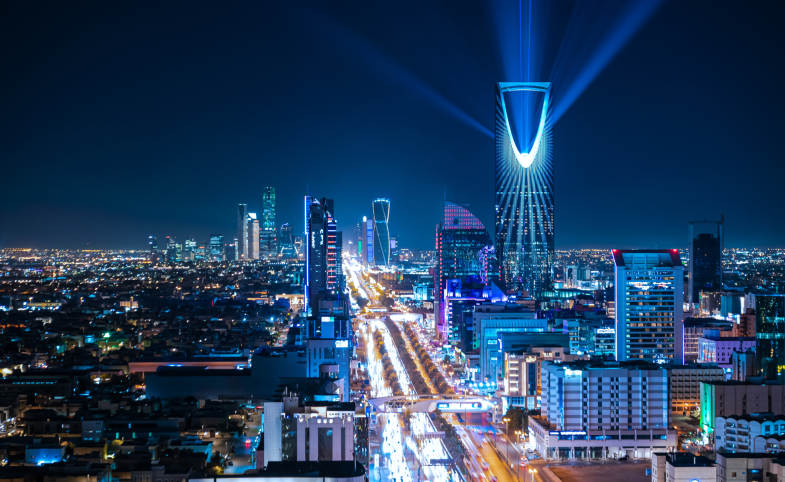This article is the second in a three-part series by Zenia Duell on the fourth World Conference on Creative Economy (WCCE), held in Tashkent, Uzbekistan. The first part explored international conferences as a tool for...
KEEP READINGThe CPD Blog is intended to stimulate dialog among scholars and practitioners from around the world in the public diplomacy sphere. The opinions represented here are the authors' own and do not necessarily reflect CPD's views. For blogger guidelines, click here.

Tourism Policy as Public Diplomacy, the Saudi Case
Saudi Arabia has put tourism to the service of its foreign policy goals. The country, which is embarking on a grand strategic initiative, Vision 2030, uses its new tourism policy, launched officially in 2019, to diversify away from complete oil dependence. The policy seeks to attract foreign direct investment, generate new revenue using tourism-related activities; reduce Saudi tourist spending outside of the country by offering local alternatives; creates jobs, and effects social change. Moreover, the tourism policy is endeavoring to change the image of the kingdom among publics of Western democracies to support Saudi Arabia’s foreign policy goals. For this purpose, the kingdom is using its tourism policy as a tool of public diplomacy. The tourism policy includes aspects like tourism strategy, promotion, changes in legislation, events, social media influencers, celebrity endorsements, and the World Expo.
Tourism policy offers the state possibilities of communicating with millions of targeted audiences, in person and virtually. Saudi Arabia’s high-profile sports events are also viewed by millions of traditional media audiences. In addition to those who attended the Formula1 race in person, for example, 920,000 viewers watched the Saudi Arabian race on ESPN in 2024, and 1.5 million in 2023 (Brittle 2024). The Kingdom has been successful in hosting other live events that attract large numbers of in-person spectators. Soundstorm EDM festival, for example, reportedly had 630,000 attendees over three days (Habtemariam 2024).
Partnerships with celebrities and social media influencers have generated millions of views globally. The campaign “Go Beyond What You Think” reached 747 million persons across 92 countries in 20 languages, with an engagement of 84.3 million only two months after its launch. 48 million of the campaign’s Instagram reach is attributed to its partnership with Messi, given his large following on the social media platform. Saudi Arabia also communicates with hundreds of thousands of members of the international public through participation in tourism trade fairs and the World Expo. The trade show ITB Berlin for example, which featured Saudi kingdom as its main sponsor, welcomed more than 100,000 visitors in 2024 (ITB 2024). Saudi Arabia has won the bid to host Expo 2030. This will be an opportunity to deliver the Kingdom’s intended narrative to millions of visitors. Its predecessor, Dubai Expo, reported more than 24 million visits between October 2021 and March 2022 (UAE Embassy in Washington, DC, n.d.). The Saudi pavilion at that Expo received over three million visitors (Forster 2022).
Through tourism campaigns, the state aims to deliver specific messaging to targeted audiences. The Saudi Tourism Authority’s 2024 video campaign featured Lionel Messi attacking four misconceptions about the country: just a desert, nothing much happening, closed culture, and girls can’t (Visit Saudi 2024; Habtemariam 2024). The “Go Beyond What You Think” video offered an alternative narrative, showing sea, corals, rivers, and snow in response to the first criticism. An exciting ride in a theme park, a Formula 1 race, a hot air balloon show by candle lights, fireworks, and a western style concert were shown in response to the second criticism. To refute the third notion about the country, the video showed people of different races sitting for a meal in Saudi Arabia; a young western family visiting a cultural heritage site guided by a local; a western man dancing to a Saudi folklore group’s traditional music; and a convertible car being driven by a Saudi woman with western passengers. In the last section of the movie, the video contested the stereotypical image of Saudi Arabia as a chauvinistic country, as it showed the Saudi female soccer team; the first female Saudi astronaut Rayyanah Barnawi; Saudi female DJ Cosmicat; and Dania Akeel, the female Saudi motorsport athlete.
"Through events like fashion shows, concerts, and sports activities...the Saudi state is seeking to project a new persona to the world."
The Saudi state uses its tourism policy to engage in re-branding. Through events like fashion shows, concerts, and sports activities; announcing the changes it is making to its legislation governing tourism and women’s rights; and deploying advertisements and exhibitions, the Saudi state is seeking to project a new persona to the world. The new image is of a modern, tolerant, normal, interesting, welcoming, fun, happy, forward looking, reforming country with deep cultural roots. It used its new country personality traits, conveyed through its tourism strategy, to counter its image in the West of being a conservative, backward, closed, extremist, chauvinist, dangerous, cruel and closed-minded country. The embracing of western modes of entertainment along with the standards of hospitality expected as part of touristic activities, have signaled to the western public that Saudi is not what had been depicted in media for decades, and that it is different from how to it used to be before the King Salman era. The change of legislation and liberalization of society and regulations in sectors related to tourism allow the Saudi Kingdom to respond to some of the criticisms regarding its governance of the country. It can do so by indicating that it is moving toward liberalization and reform at its own pace in several sectors (Feierstein 2018).
Entertainment components of the Saudi tourism policy are targeting young audiences globally. In the medium to long term goal of altering the image of Saudi Arabia in the West, it is a shrewd strategy to focus on those who are young. It may be difficult to undo decades of poor perceptions among older Western audiences who had been exposed to decades of negative portrayal of the Kingdom in Western films and traditional media. However, targeting a younger populace allows the Kingdom to speak to an audience which has encountered far fewer incidents of negative image portrayal and which can be reached, and possibly positively influenced, via social media regardless of traditional Western media coverage. Investment in changing the image of Saudi Arabia among young western publics today means the Kingdom may draw more supporters, and possibly fewer critics, in the West in the future. The policy is seeming to bear fruit. Simon Anholt has noted that the scores given to Saudi Arabia on the Nation Brand Index by three age cohorts, (45+, 30-44 and 18-29), got higher as the age group got younger (Anholt 2023).
Saudi Arabia’s use of tourism policy as a public diplomacy instrument has an advantage over some other possible tools like scholarships or cultural exchanges, because of the magnitude of its reach. At the same time, the use of tourism policy as public diplomacy enables the distribution of intended foreign policy messaging using different tourism media; allows the state to gradually modify its persona and brand internationally; is a good justification for spending millions on marketing, public relations and promotion; signals a move towards reform; appeals to youth; and circumvents the damage done to Saudi Arabia’s image by traditional media.
Visit CPD's Online Library
Explore CPD's vast online database featuring the latest books, articles, speeches and information on international organizations dedicated to public diplomacy.
POPULAR ARTICLES
-
November 3
-
November 5
-
October 16
-
November 13
-
October 16
Join the Conversation
Interested in contributing to the CPD Blog? We welcome your posts. Read our guidelines and find out how you can submit blogs and photo essays >.













